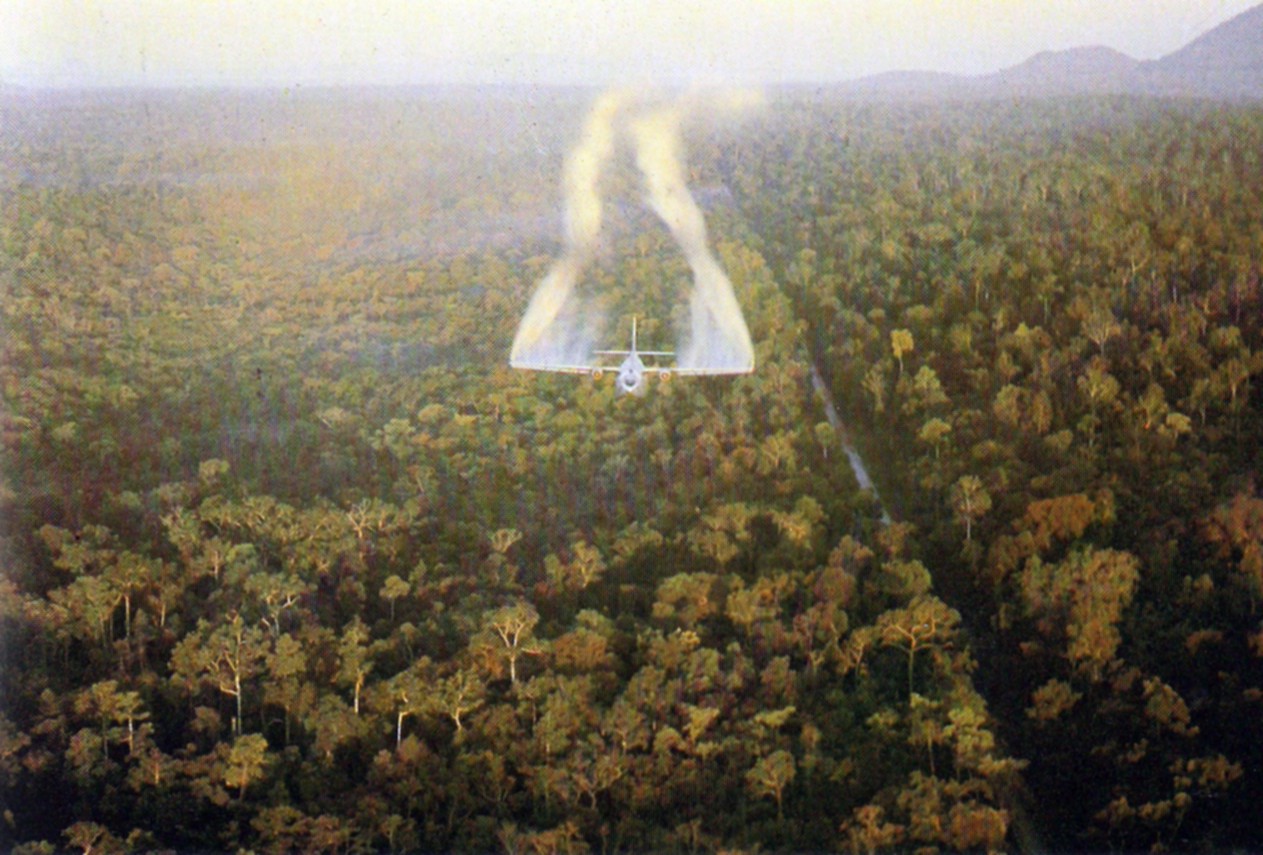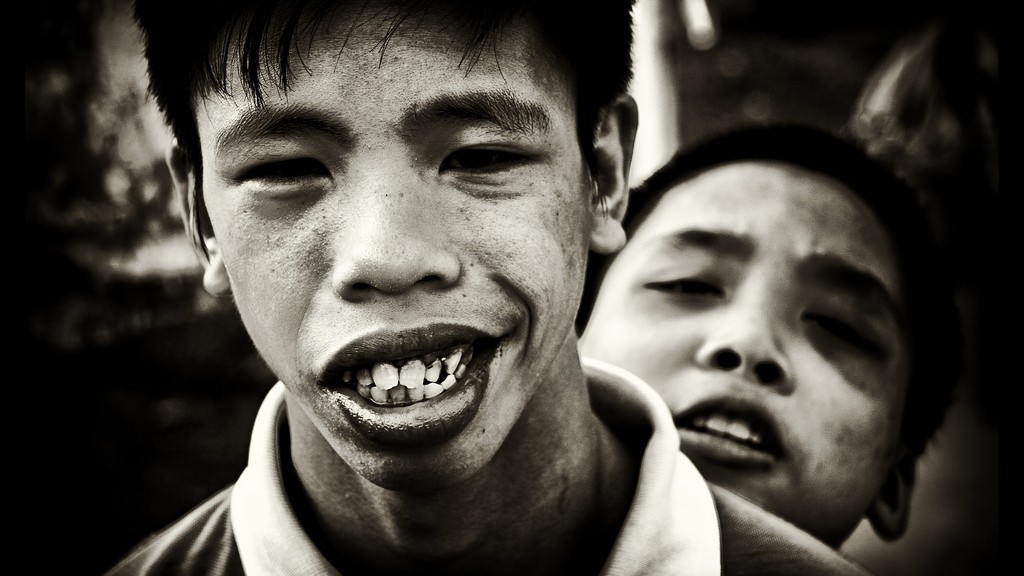In early 1960s, after the formation of the National Liberation Front (NLF), Vietnamese communists began to increase their operations in South Vietnam. As part of their guerilla tactics, the Viet Cong usually based and operated in South Vietnamese lush jungles so that they could easily hide from the hunts of the U.S. and South Vietnamese troops. To deprive the Viet Cong of food & vegetation cover, U.S. military decided to conduct a herbicidal warfare called “Operation Trail Dust” over rural areas of South Vietnam, including forests and crops which might be used to feed them.

On August 10, 1961, the first aerial spraying of herbicides was tested in the north of Dak To against foliage. The testing continued until Operation Ranch Hand began in early 1962 and lasted for nearly 10 years. Agent Orange was one of several herbicides and defoliant used in the campaign, which later became highly controversial in public because of its dramatic health and ecological effects.
Agent Orange
Agent Orange was one of several “Rainbow Herbicides”, a group of chemicals used in the Operation Ranch Hand. It was created by mixing 50:50 two agricultural herbicides: the 2,4-D and the 2,4,5T. Present in the 2,4,5-T as an impurity was 2,3,7,8-tetralchlorodibenzo-p-dioxin (TCDD), commonly known as dioxin. According to many studies, people who exposed to the dioxin could suffer serious health issues such as mental problems, muscular dysfunction, birth defects and could even cause the development of various cancers. However, because of its high effectiveness, Agent Orange became the most used herbicides among the “Rainbow Herbicides”. From January 1965 and April 1970, there were about 12 million gallons of Agent Orange sprayed in South Vietnam.
Effects of Agent Orange
Ecological Effects
Using as a herbicide, Agent Orange caused huge damages to the environment in Vietnam. Even to date, its adverse effects were still visible. About 10 percent of tall trees in inland forests were destroyed. Aggressive pioneer species, such as bamboo and tussock grasses, quickly replaced destroyed woody plants, which obstructed the forests from regenerating. In coastal areas, mangrove forests were significant damaged and badly eroded. As rich and diverse tropical forests disappeared, so did the habitats. In a Harvard biologist’s study, there were around 150 species of birds and 40 species of mammals in an un-sprayed forest compared to just 24 species of bird and 5 species of mammals in a sprayed one. Dioxin of Agent Orange did not just break down easily, it settled in the soil working their way up the food chain and passed to humans.
Health Effects
During the war, between 2.1 and 4.5 million Vietnamese lived in areas sprayed with dioxin-contaminated herbicides whilst about 2.4 million Vietnam veterans were presumed to be exposed to the Agent Orange.
Health issues of Vietnam veterans were quickly regarded as a serious problem in the U.S. Many studies showed that these veterans faced a higher risk of developing cancer, skin irritations, psychological symptoms and having children with birth defects. Thousands of deaths were suspected as consequences of Agent Orange exposure while many veterans alleged their sickness due to the defoliant. Exposure of dioxin became a major issue among Vietnam veterans for years.
In Vietnam, the number of Vietnamese nationals, who were exposed to Agent Orange, was difficult to determine. While an average U.S. Vietnam veterans only served for about six months in Vietnam, Vietnamese people have been living in a potentially dioxin contaminated areas for years. Even though the government of Vietnam is unable to conduct a comprehensive exposure study due to its lack of financial resources, it is estimated that around 5 million Vietnamese were exposed to Agent Orange and at least 500,000 children were born with birth defects such as cleft palate, mental disabilities, and hernias. However, those figures were considered as unreliable and unrealistically high by the U.S. government.
Legal and diplomatic proceedings
Years after the end of Vietnam War, several lawsuits have been filed against Dow Chemical, Monsanto, and Diamond Shamrock, the chemical companies which produced Agent Orange. In 1979, a lawsuit was filed on behalf of 2.4 million Vietnam veterans who were exposed to Agent Orange. Five year later, seven chemical companies agreed to pay $180 million in compensation to the veterans. In 1991, the Agent Orange Act was signed by President George H.W. Bush, allowing veterans who had certain diseases to receive treatments and various compensation benefits. However, those who were exposed to Agent Orange but did not “set foot” in Vietnam such as some Navy and Air Force veterans served in Thailand were not entitled to this.
In 2002, a joint conference was held by Vietnam and the U.S. to discuss and find solutions regarding Agent Orange’s impact. After 3 years, both sides still could not reach any agreement and the negotiation broke down. In 2004, the Vietnam Association of Victims of Agent Orange (VAVA) filed a lawsuit against more than 30 chemical companies for producing the Agent Orange and that its use violated the international law. However, on March 10, 2005, Judge Jack B. Weinstein, who had presided over the 1984 US veteran lawsuit, dismissed the lawsuit; the final appeal was rejected again by a U.S. court in 2008. In June 2011, the U.S. government began their first efforts to improve the situation. A $32 million funding program has been allocated by Congress to decontaminate dioxin hotspots in Vietnam although Vietnamese victims of dioxin still have not received any compensation from the U.S. government.
